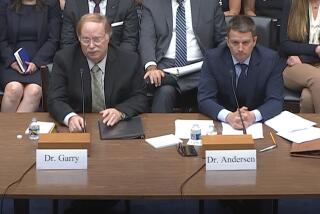Beginnings of Life Are Still a Puzzle
Another suggestion as to the possible origin of life has turned out to be unsatisfactory, and scientists are left with a puzzle they have been brooding over for more than half a century.
Unmistakeable traces of bacterial cells have been found in rocks that are 3 1/2 billion years old, and Earth is 4 1/2 billion years old. Some time in the first billion years of Earth’s existence, then, living things evolved out of nonliving chemicals. But how? What are the details?
The trouble is that no one was there to watch and we have no time machine in which to go back. We can only reason out the matter from what we can observe on Earth and in the universe today.
Scientists have worked out the general chemical structure of the early Earth. For instance, in its youth, Earth’s atmosphere contained no oxygen; that is a product of modern life. Earth’s original atmosphere comprised largely carbon dioxide and nitrogen with perhaps some methane and ammonia. The ocean was probably full of dissolved carbon dioxide, like a seltzer; or full of ammonia, like a window-cleaning compound; or both.
Energy poured down upon the air and ocean from sunlight that was rich in ultraviolet light because, without oxygen, no ozone layer formed in the upper atmosphere to block the ultraviolet. There was also volcanic action to supply heat, and lightning to supply electrical energy.
The energy would build up the carbon dioxide or methane of the air and ocean into more and more complicated carbon compounds until the properties of life appeared.
Scientists have tried to work out the exact pathway by which this would have taken place, but none seemed completely satisfactory. We need more information. That is why there was such disappointment when it turned out there were no carbon compounds in the soil of the moon or of Mars. If such compounds had been present, they might have represented a stage in the journey toward life, and could have given us the necessary additional information.
Then, of course, it might be that our difficulties arise from the fact that we have been heading in the wrong direction altogether.
In 1977, for instance, deep-sea submarine work revealed that there are certain places in the ocean bottom where the heat of the inner layers of the Earth come close enough to the sea floor to produce “chimneys” from which hot water, rich in minerals, curls upward into the cooler ocean. About such “hot spots,” bacteria lived. These bacteria get their energy from chemical changes in the minerals that spew upward, particularly those containing sulfur atoms.
Small animals feed on these bacteria and larger animals feed on these small ones. A whole community of life, the existence of which had never been suspected, depended on the energy of these hot spots instead of the energy of the sun.
Perhaps life had formed on the ocean surface, as we have been thinking for decades, and evolutionary pressures forced some bacteria downward, adapting them to life in the hot spots. However, scientists were unable to work out a convincing scenario to explain how this might have happened.
But is it possible that it was at the hot spots that life first formed, and from the hot spots that it spread to the ocean surface? If so, that would account for scientists’ inability to work out a scenario for life’s origin on the ocean surface--because it did not originate there.
Certain observations seemed to support this theory. The hot spots seem to have existed from the time the ocean first formed, long before life had come into existence, and they have offered a stable environment for billions of years. Their position at the bottom of the ocean would protect the fragile beginnings of life from the disruptive effects of strong ultraviolet light, and from the disturbances of volcanic heat and meteoric bombardment that were much more common in early days. Then, too, the minerals in which the hot spots are rich are just those that are important to life.
In 1988, however, two scientists, S. I. Miller and J. L. Bada, reported on an exhaustive study of the conditions in the hot spots, and how these conditions might affect the developing molecules that were building up in the direction of life.
It turned out, disappointingly, that the hot spots were too hot. Their high temperatures would cause any amino acids (the basic components of proteins) that happened to be formed there to break down in minutes. Any sugar that formed would break down in seconds. There seemed no way in which the proteins and nucleic acids could ever have formed under those conditions.
So the bacteria that form the basis of life in the hot spots must have come into being elsewhere--which takes the search for the origin of life back to the ocean surface.






